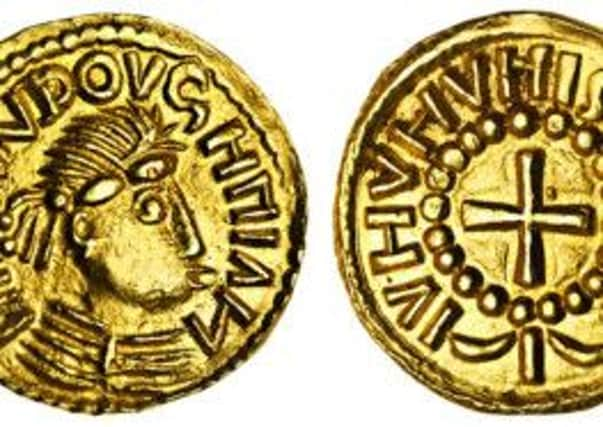Torksey: A rare coin which was found in Torksey in the summer has sold at auction for £43,200


The coin was found by a metal detectorist in Torksey back in August and sold at an auction today (Thursday 18th December) for £43,200, nearly £18,000 more than what was expected.
The so-called Louis the Pious imitation solidus was made in or around 816.
Advertisement
Advertisement
It is only the 13th Louis the Pious imitation Solidus found in Britain.
London auctioneers Spink say the coin is ‘a remarkable work of art from 9th Century England of exceptional quality and artistic appeal.’
The coin is expected to sell for between £15,000 and £25,000 at Spink in Bloomsbury, London, on Thursday 18th December.
Spink has not revealed the name of the detectorist who found the coin, but they confirm that the coin was found in the West Lindsey district in August.
Advertisement
Advertisement
The Solidus was originally a gold coin issued in the Late Roman Empire.
It was introduced in 312 by Constantine 1 and replaced the older Aureus as the main gold denomination.
The imitation Solidus found in Torksey in August is not the first such coin found in this part of the world.
A spokesman for Spink said: “Further evidence that Solidi circulated for trade in 9th Century Lincolnshire is the discovery in November 1996, near Louth, of a cut quarter of Pious Solidus.”
Advertisement
Advertisement
Jon Mann, a coin expert at Spink, said the West Lindsey gold coin is ‘absolutely superb quality’’
Of the 13 Louis the Pious Solidi found in Britain, at least four are in museum collections, the Fitzwilliam, Cambridge, the Ashmolean Museum Oxford, the British Museum, London and Southampton Museum.
With this most recent discovery the number of Louis the Pious imitation Solidi found in Britain now stands at 13 examples with nine of these, including the current piece, being found in England.
This unique artefact lends good weight to the argument that imitative Solidi were struck in Britain during the 9th Century.
Advertisement
Advertisement
The gold content of the current piece appears high and the weight at 4.38g complies with the established weight standard of 4.4g for Solidi of the period.
This would, therefore, point towards an earlier imitation which was struck for trade purposes.
Further evidence that Solidi circulated for trade in 9th Century Lincolnshire is the discovery in November 1996 near Louth of a cut quarter Pious Solidus, possibly of Aix-la-Chapelle.
Lincolnshire is also the find spot of the remarkable imitative Solidi lead trial piece.